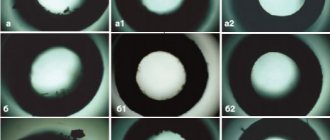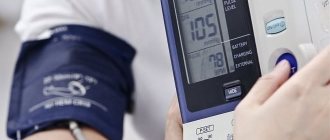The age of people affected by myocardial infarction is decreasing from year to year. In many cases, such patients are far from pensioners: they are often middle-aged men and women. Therefore, lost ability to work leads to the fact that a person may become unemployed.
Does such a patient receive disability? This doesn't always happen. To accurately answer this question, you need to know how a group is defined.
What is myocardial infarction
The disease is called an ischemic necrotic focus of the muscle tissue of the heart, which appears due to a violation of coronary blood flow. The patient complains of burning or squeezing pain behind the sternum. It radiates to the left shoulder blade and arm.
ICD code 10 I21 (Acute myocardial infarction).
Attention! In case of illness, it is necessary to urgently hospitalize a person in a cardiac intensive care unit. If assistance is not provided in a timely manner, death may occur.
What is stenting
This is a minimally invasive endovascular intervention on the heart vessels. Its principle is that the procedure expands narrowed and clotted areas using a stent. It is installed in the arterial lumen.
On atherosclerotic plaques there are protrusions where the inflammatory process develops. The inner vascular layer is scarred and destroyed. This is where blood clots form.
This pathology reduces the lumen and can clog the artery. Blood does not flow to the heart properly. This threatens ischemic disorders with subsequent development of a heart attack.
Stenting restores blood flow through the coronary vessels, where atherosclerotic changes are localized. However, it does not relieve the patient of plaques. Over the course of several years, the procedure eliminates the signs of the disease and the negative consequences of myocardial infarction.
Main characteristics of coronary stenting:
- This is an endovascular intervention. All actions are carried out only inside the vessel. During the operation, no cuts are made to the skin or damage to its integrity.
- During one stenting, 1-4 stents are installed. The quantity depends on the number of pathological areas.
- To carry out the required intervention, the patient is injected with a radiocontrast agent, which will fill the heart vessels. High-precision X-ray instruments are used to control the flow of the dye.
Read also: Rules for issuing a certificate of incapacity for work: information about the diagnosis
Is there any disability after stenting? Yes, if after the intervention the patient is in serious condition and is not capable of self-care.
Alcoholic drinks after a stroke
The question of whether you can drink alcohol after a stroke (or mini-stroke) is more controversial. The answer to it is largely determined by what kind of stroke a person has experienced: ischemic or hemorrhagic (this is determined by a neurologist based on a number of signs; currently, doctors rely primarily on computed tomography data). If the stroke was hemorrhagic, then you should definitely say “no” to alcohol, even if it is just a micro-stroke. It's all about the increase in blood pressure under the influence of ethanol (it is hypertension that most often leads to hemorrhagic stroke). Therefore, even a micro-stroke is a signal of danger, the first sign that it is time to radically change your lifestyle.
In the case of ischemic stroke or microstroke, everything is much more complicated. Its main causes are atherosclerosis and thrombosis, and alcohol in small doses helps prevent these conditions. However, it is possible that the first stroke or micro-stroke was caused by alcohol consumption (the main sign that allows us to draw such a conclusion is the amount of alcohol consumed recently).
In any case, you should definitely reconsider your attitude towards alcohol: now you can only drink in small portions, and nothing else. If a person gets heavily drunk, he runs the risk that a micro-stroke will develop into a major stroke, and the consequences will be very serious. In general, studies conducted among men who have suffered an ischemic stroke or mini-stroke show the same figures that are typical for a heart attack.
As statistics show, alcohol after a heart attack, stenting and ischemic stroke (ministroke) can be consumed (and even useful), but only in small quantities: no more than a glass of wine, a mug of beer or a glass of vodka per day (this dose is calculated for men, for women it should be even smaller). However, you should not start drinking for medicinal purposes: there are medications for this. Modern drugs cope with protecting the heart and blood vessels much better than alcohol. It will be optimal if you drink only on holidays, but in small doses.
The situation is even more complicated with a stroke . If a number of signs determine that he is hemorrhagic, then alcohol is definitely prohibited . For ischemic stroke, as well as for heart attack or stenting, a small amount of ethanol is allowed. In any case, before you start drinking alcohol after a stroke or heart attack, you should consult with your doctor. Only he will be able to take into account the state of your body and the compatibility of alcohol with the medications you are taking. Remember that his opinion in this matter should be decisive.
What is a stent, types
The lumen of the cardiac artery is restored with a stent using a thin metal prosthesis made in the form of a mesh tube. It presses the plaque into the walls of blood vessels and pushes them apart, acting as a frame. The device prevents the artery from narrowing again.
Characteristics of modern stents:
- Made from an alloy of metals (cobalt and chromium). The material does not cause a rejection reaction from the body and ensures the strength of the product.
- They have the shape of a tube 10 mm long, 0.25-0.6 cm in diameter.
- The walls of the stent are mesh. This allows you to change the diameter of the device. The smallest one is used to introduce the product to the site of an atherosclerotic plaque, and the larger one allows you to expand the narrowed area.
- The walls of the stent are coated with a special compound. It prevents blood from clotting on the device. The substance gradually comes out, which prevents the formation of blood clots on the device itself.
Features of registration of disability
Before referring a patient for MSE (medical and social examination), the doctor sends him for research. They will show the need for examination.
The doctor should fill out form 088/у. He submits an application for a medical examination in order to assign a disability group and select an IPR (individual rehabilitation program).
The doctor specifies the date when you should appear for the examination. The commission has the right to conduct additional diagnostics, study the social and living situation or obtain a work history of the patient undergoing a medical examination.
Attention! All actions carried out by the commission are free. They are covered by compulsory medical insurance. The group is established from the moment an application is submitted to recognize the patient as disabled.
How is a group defined?
The disease does not have clear conditions for determining the assignment of disability. All patients experience the disease to varying degrees. That is why the commission approaches patients individually.
Read also: What disability group is given for breast cancer?
Do people get disability after a heart attack and stenting? BMSE considers the disease according to the following parameters:
- presence of heart failure and its FC,
- the result of the rehabilitation carried out,
- Is the person capable of working?
- Is the patient adapted to new conditions and self-care at home?
The degree of disability is assessed by the following indicators:
- nature and duration of pain,
- difficulty walking, climbing stairs,
- are there arrhythmias, extrasystoles and other cardiac disorders,
- pathological changes on ECG or EchoCG,
- disorders identified during testing of functional loads.
Disability groups after myocardial infarction and stenting:
- I is assigned to a person with a low probability of recovering health after an illness. He is worried about frequent attacks of “angina pectoris” and symptoms of heart failure that cannot be compensated.
- II is assigned to a person who will not be able to work in his previous type of activity. This applies to heavy physical work or factors that contribute to deterioration of health or recurrent illness. A change of profession to an easy one is required. The patient often suffers from angina attacks. They require treatment and rehabilitation course.
- III is issued to persons who can remain in their profession and carry out their previous activities, but with restrictions. Such patients have infrequent attacks of cardiac activity. Sometimes patients are forced to change their type of work.
Can I drink wine?
A heart attack and wine are completely compatible; even more, a glass of wine a day will help cope with problems with the cardiovascular system.
Flavonoids, which are one of the components of red wine, help with heart function. These elements produce good cholesterol and fight bad cholesterol. A large amount of them is found in dry red wine; the more sugar, the less antioxidants in wines.
Another important element that fights cancer cells and is present in dry red wine is resveratrol.
However, it must be remembered that not all wines contain these elements. Wines based on the Lydia and Isabella grape varieties do not contain flavonoids, so these types of wine should not be taken for therapy.
There is also a flip side to the coin; drinking large quantities of wine only causes harm.
The essence of therapy is how much and how to take wine. Taking a sip of wine after a meal will benefit the body. Be more careful when taking this ancient drink of the gods; an extra drop can cause great harm, especially after suffering from cardiovascular diseases.
When can a disability application be denied?
BMSE has special criteria. They are taken into account during the examination. Why are they refusing to issue a disability after stenting of cardiac vessels and myocardial infarction:
- work is not accompanied by intense physical or psycho-emotional stress. It does not require the patient to change his profession to an easier one,
- The treatment measures were successfully carried out, there is no likelihood of a recurrent heart attack. The patient’s condition must be confirmed by additional research methods,
- the patient fully retained the ability to independently care.
When the patient is ready to work, the attending doctor will mark the closure of the sick leave sheet after stenting.
Relevance
Should carotid stenting or endarterectomy be used in asymptomatic elderly patients with severe carotid stenosis?
This issue continues to be actively discussed. Previous research suggests that age may play an important role in decision making. Thus, the incidence of adverse cardiovascular events may increase with stenting, but not with endarterectomy.
The authors of the present study analyzed data from 2 studies, CREST and ACT I, to better examine this issue.
What is prohibited
A person with a myocardial infarction or after stenting of cardiac vessels is given disability for the following activities:
- Requiring special attention and psycho-emotional stress.
- Those working with high-risk devices (machine operators on production lines).
- Employees in aviation institutions (pilots, dispatchers, flight attendants).
- Accompanied by long walking loads or prolonged standing (postman, cook).
- The place of work is located far from the patient’s place of residence and populated areas.
- Accompanied by harmful conditions at work.
- Including work with night and daily shifts.
- High-altitude work.
Attention! A person is diagnosed with a disability and is restricted from working with a recommendation to change profession (in groups II and III) or is completely prohibited from working (in group I).
Re-examination: how often is it necessary to undergo an examination?
The commission has the right to issue the first group for life if the person is in serious condition and the likelihood of successful therapy is low. However, most often the patient has to undergo regular re-examination.
Read also: Where to file a complaint against a clinic doctor: reasons for complaints
The first group should undergo an examination every 2 years. From II and III once every 12 months.
The treating doctor must indicate the therapeutic regimen and rehabilitation that were carried out over the past year and failed to improve the patient’s condition. For the re-examination, the patient prepares the same list of documentation as for the initial examination.
A certificate of disability and IPR must be attached. In the latter, the doctor marks the implementation of rehabilitation measures that were prescribed during the previous examination. These include the work schedule that the employer provides for the patient, regular examinations by the attending doctor and the performance of examinations.
Attention! If there are no such marks, BMSE has the right to refuse to extend the disability.
Is it possible to drink vodka
There is a lot of discussion around alcohol, namely around the permissible doses for use.
Vodka has a detrimental effect on the heart, but there is a fine line without crossing which the patient does not harm the body. However, this amount can only be calculated on an individual basis. It is necessary to know the history of the disease, lifestyle and age in order to make the correct calculation and not harm the body.
Therefore, theoretically, vodka can be consumed after a heart attack, but an individual approach is required to calculate the safe dose - it can be two tablespoons, or maybe one drop.











